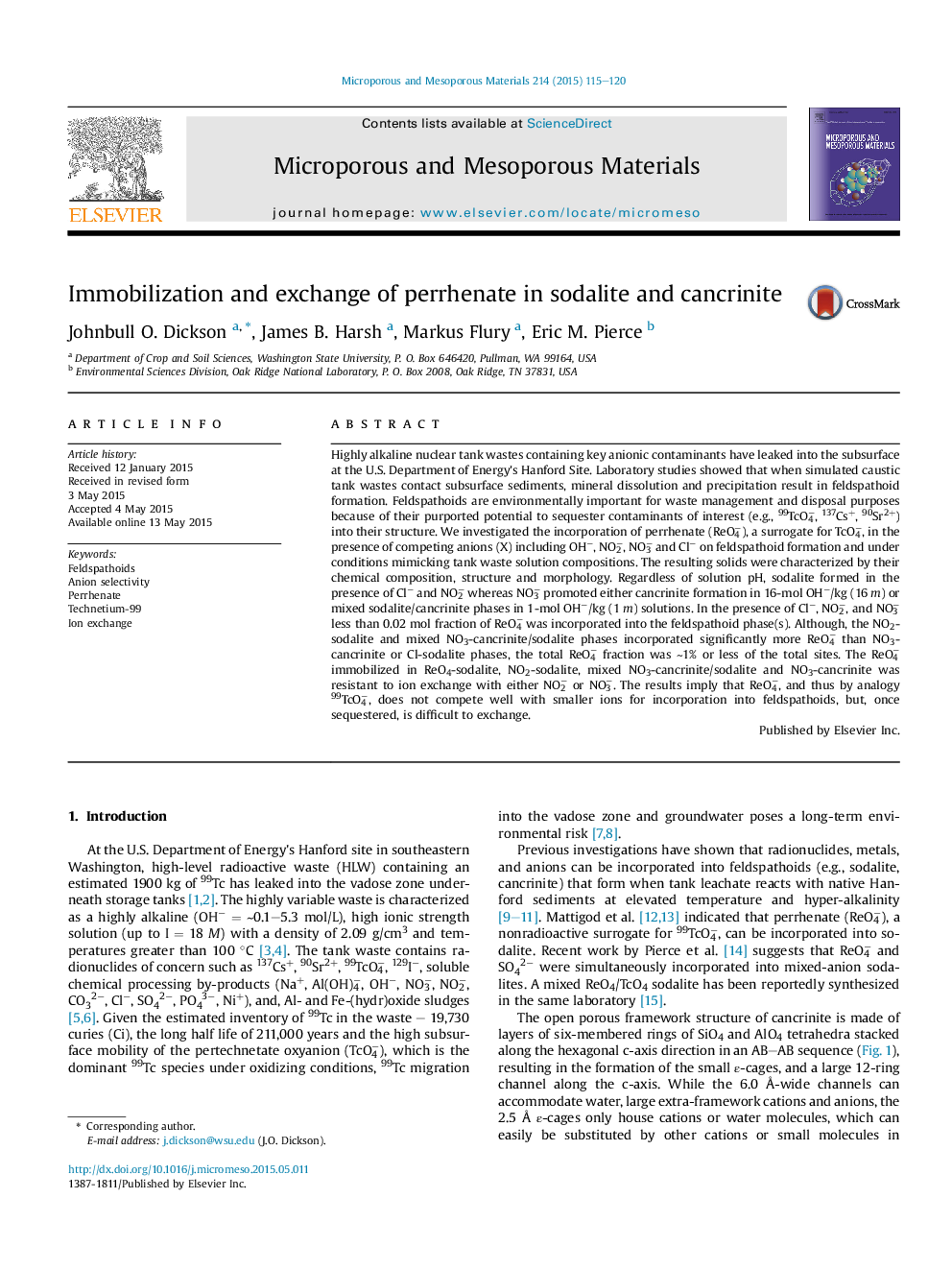| کد مقاله | کد نشریه | سال انتشار | مقاله انگلیسی | نسخه تمام متن |
|---|---|---|---|---|
| 72546 | 49024 | 2015 | 6 صفحه PDF | دانلود رایگان |
• ReO4/X-bearing feldspathoids were synthesized at low and high alkalinity.
• Alkalinity, anion size and selectivity determined the feldspathoid type.
• Perrhenate had little effect on the nature of the synthesized feldspathoids.
• Weak competition of ReO4 with smaller ions for feldspathoid structure was shown.
• We report the resistance of the sequestered perrhenate to ion exchange.
Highly alkaline nuclear tank wastes containing key anionic contaminants have leaked into the subsurface at the U.S. Department of Energy's Hanford Site. Laboratory studies showed that when simulated caustic tank wastes contact subsurface sediments, mineral dissolution and precipitation result in feldspathoid formation. Feldspathoids are environmentally important for waste management and disposal purposes because of their purported potential to sequester contaminants of interest (e.g., 99TcO4−, 137Cs+, 90Sr2+) into their structure. We investigated the incorporation of perrhenate (ReO4−), a surrogate for TcO4−, in the presence of competing anions (X) including OH−, NO2−, NO3− and Cl− on feldspathoid formation and under conditions mimicking tank waste solution compositions. The resulting solids were characterized by their chemical composition, structure and morphology. Regardless of solution pH, sodalite formed in the presence of Cl− and NO2− whereas NO3− promoted either cancrinite formation in 16-mol OH−/kg (16 m) or mixed sodalite/cancrinite phases in 1-mol OH−/kg (1 m) solutions. In the presence of Cl−, NO2−, and NO3− less than 0.02 mol fraction of ReO4− was incorporated into the feldspathoid phase(s). Although, the NO2-sodalite and mixed NO3-cancrinite/sodalite phases incorporated significantly more ReO4− than NO3-cancrinite or Cl-sodalite phases, the total ReO4− fraction was ∼1% or less of the total sites. The ReO4− immobilized in ReO4-sodalite, NO2-sodalite, mixed NO3-cancrinite/sodalite and NO3-cancrinite was resistant to ion exchange with either NO2− or NO3−. The results imply that ReO4−, and thus by analogy 99TcO4−, does not compete well with smaller ions for incorporation into feldspathoids, but, once sequestered, is difficult to exchange.
Figure optionsDownload as PowerPoint slide
Journal: Microporous and Mesoporous Materials - Volume 214, 15 September 2015, Pages 115–120
